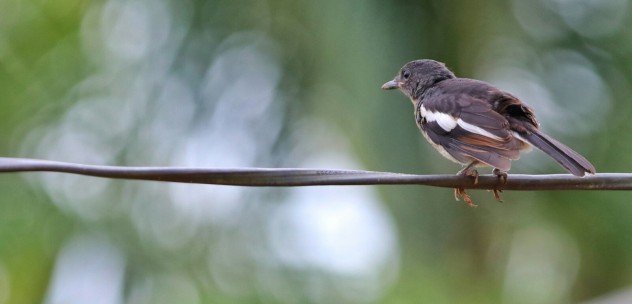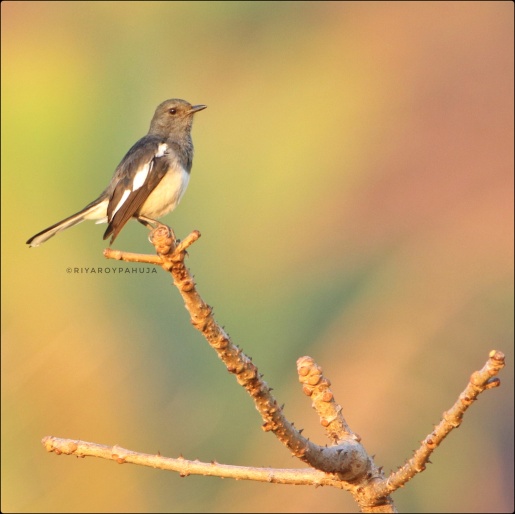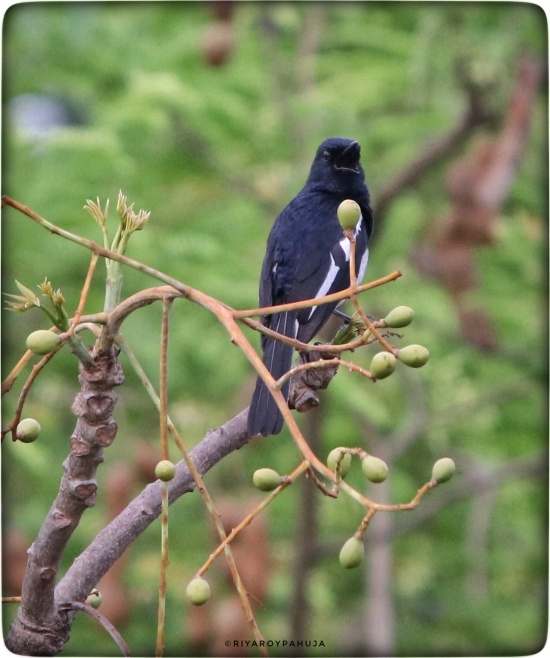So this is a post on one of my favorite sections where I collect and gain knowledge about the beautiful creations surrounding us. Yes, as always I am talking about my favorite creatures on this planet. ‘BIRD’ and this is that part where I share everything possible “about the bird” from Internet ,books, friends or personal experiences. I took really long time to create a post on Oriental Magpie Robin which is happen to be the most common bird that I see on a regular basis, like everyday (well of course, besides crow :P) So why late? Just to get the best possible shot possible. But you know what, a photographer is never satisfied with his/her work, there is always something more that we want to get. The better lighting, the better perch, the glory eye focus, the magnificent flying shot, shots with prey etc etc. There is no end to it. No matter how close I get to them, its just not enough for me. I want to see them all day from a close encounter. Well, thats just not a possibly practical thing to do. We have to mind our own businesses as they do mind theirs. So here is the detailed “about the bird” post on our very own Oriental Magpie Robin.

ORIENTAL MAGPIE ROBIN
Oriental magpie Robin is a small passerine bird that was formerly classed as a member of the thrush family Turdidae, but now considered an Old World flycatcher.
Scientific name: Copsychus saularis
Also known as doyel (in bengali and other regionals languages in India)
Appearance:
They are distinctive black and white birds with a long tail that is held upright as they forage on the ground or perch conspicuously. They are about 17-20 centimetres (7.5 in) in length, including the long tail. The male has glossy black upperparts, head and throat apart from a white shoulder patch. The underparts and the sides of the long tail are white. Bill is black. Eyes are dark. Legs and feet are blackish. Females are greyish black instead of glossy black and greyish white instead of white. Young birds have scaly brown upperparts and head.
Habitat:
The Oriental Magpie Robin is found in open woodland, cultivated areas often close to human habitations. They prefer open areas such as mangroves, gardens, cultivated areas. They are not found in the deep forest.

Behaviour:
In the non-breeding season it is shy and quiet, skulking about in undergrowth. The Oriental Magpie Robin is a common and tame bird. It is terrestrial, hopping along the ground with cocked tail.
They are often active late at dusk. They sometimes bathe in rainwater collected on the leaves of a tree.

Distribution:
This magpie-robin is a resident breeder in tropical southern Asia from Bangladesh, interior India, Sri Lanka and eastern Pakistan east to Indonesia, Thailand, south China, Malaysia, and Singapore.[3] They have been introduced to Australia.

Breeding and nesting:
Magpie robins breed mainly from March to July in India and January to June in south-east Asia. Males sing from high perches during courtship. The display of the male involves puffing up the feathers, raising the bill, fanning the tail and strutting .
They build their nests almost anywhere from thick shrubs, in the fork of branches of small trees, palms, hollow trees and even near human habitation, under a veranda, in a hole in the wall, in an old tin can, and in stables. They line the cavity with grass. The female is involved in most of the nest building, which happens about a week before the eggs are laid. 4-5 eggs are laid at intervals of 24 hours and these are oval and usually pale blue green with brownish speckles that match the color of hay. The eggs are incubated by the female (sometimes males too) for 8 to 15 days.

Diet:
The diet of magpie robins includes mainly insects and other invertebrates. Although mainly insectivorous (mainly caught insects on ground), they are known to occasionally take flower nectar, geckos, leeches, centipedes and even fish.

Voice:
Oriental magpie robins are mostly known for their sweetest songs.The Oriental Magpie Robins have a delightful varied song and are said to be able to imitate the calls of other birds while singing.
Males sing from high perches during courtship. Females may sing briefly in the presence of a male.Apart from their song, they use a range of calls including territorial calls, emergence and roosting calls, threat calls, submissive calls, begging calls and distress calls. The typical mobbing calls is a harsh hissing krshhh.

Interesting fact:
- Oriental Magpie robin is the national bird of Bangladesh.
- While searching on youtube for more information and videos on the species, what I happen to see is the caged videos of magpie robin singing. Magpie robins were widely kept as cagebirds for their singing abilities and for fighting in India in the past. It makes me feel the worst to see the beautiful avians inside a tiny cage in my own country.They continue to be in the pet trade in parts of Southeast Asia.

Concern:
This species is considered as one of “little concern” globally but in some areas the species is on the decline. This species has a few avian predators too.
I will keep on updating more as I gain ore knowledge. You know, gaining knowledge is very much more important tan just collecting information. Untill next time, keep birding and loving nature. I will see you all in my next blog.
Much love
Riya.


Leave a comment